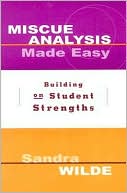Category Books
- Fiction Books & Literature
- Graphic Novels
- Horror
- Mystery & Crime
- Poetry
- Romance Books
- Science Fiction & Fantasy
- Thrillers
- Westerns
- Ages 0-2
- Ages 3-5
- Ages 6-8
- Ages 9-12
- Teens
- Children's Books
- African Americans
- Antiques & Collectibles
- Art, Architecture & Photography
- Bibles & Bible Studies
- Biography
- Business Books
- Christianity
- Computer Books & Technology Books
- Cookbooks, Food & Wine
- Crafts & Hobbies Books
- Education & Teaching
- Engineering
- Entertainment
- Foreign Languages
- Game Books
- Gay & Lesbian
- Health Books, Diet & Fitness Books
- History
- Home & Garden
- Humor Books
- Judaism & Judaica
- Law
- Medical Books
- New Age & Spirituality
- Nonfiction
- Parenting & Family
- Pets
- Philosophy
- Political Books & Current Events Books
- Psychology & Psychotherapy
- Reference
- Religion Books
- Science & Nature
- Self Improvement
- Sex & Relationships
- Social Sciences
- Sports & Adventure
- Study Guides & Test Prep
- Travel
- True Crime
- Weddings
- Women's Studies
Miscue Analysis Made Easy: Building on Student Strengths » (1st Edition)

Authors: Sandra Wilde
ISBN-13: 9780325002392, ISBN-10: 0325002398
Format: Paperback
Publisher: Heinemann
Date Published: March 2000
Edition: 1st Edition
Author Biography: Sandra Wilde
Sandra Wilde, Ph.D., is widely recognized for her expertise in developmental spelling and her advocacy of holistic approaches to spelling and phonics. She is Professor of Curriculum and Instruction at Portland State University in Oregon. She is best known for her work in invented spelling, phonics and miscue analysis. She specializes in showing teachers how kids' invented spellings and miscues can help us work with them in more sophisticated and learner-centered ways. Looking at what kids do as they read and write is at the heart of Sandra's presentations and workshops. She can do lively keynote presentations that highlight the interesting things that we can learn by paying close attention to students' invented spellings and miscues, as well as workshops of varying lengths that focus on student-centered teaching of spelling and phonics. She has recently begun offering workshops that focus on understanding students' miscues as a guide to appropriate instruction, particularly for struggling readers.
Book Synopsis
Understanding what students do when they read, and then helping them take the next step, can be easy for an informed teacher. For Sandra Wilde, the key is to focus on the strengths students bring to the process and build from there. With Miscue Analysis Made Easy, Wilde leads the way, offering a lucid, commonsense explanation of what exactly reading is and how it works.
Beginning with a series of lively, interactive exercises Miscue Analysis Made Easy leads us through the thinking processes and linguistic systems that readers use to build their understanding of text. Through a careful review of these systems, we then learn to assess what readers can do. An easy-to-use, step-by-step diagnostic procedure, including a thoughtful retelling guide, helps us to identify and then maximize the student's specific strengths. Wilde also offers ideas on how to help students develop the self-monitoring strategies they need to keep track of their own meaning-making process as they read.
Table of Contents
How Readers Use Language
Three Cueing Systems
Aren't Errors Bad? Some Underlying Principles of Miscue Analysis
Choosing Reading Material and Getting Started
Recording What Readers Do
Conduct Good Retelling
Coding Miscues: Procedures for Classroom Use
A Portrait of the Reader
What's Next for This Reader? From Miscue Analysis to Instruction
Miscue Analysis in the Life of the Classroom
Appendixes:
A. Burke's Reading Interview
B. A Sweet Trip on the Merritt
C. Darcy's Retelling
D. Sample Retelling Form
E. Darcy's Miscues
F. Darcy's Coded Story
G. Coding Sheet
H. Procedure IV
Checklist
Subjects
 Teaching Reading & Language
Teaching Reading & Language  Teaching - Reading
Teaching - ReadingEducation & Teaching
 Teaching Reading & Language
Teaching Reading & Language  Teaching - Whole Language Approach
Teaching - Whole Language Approach
